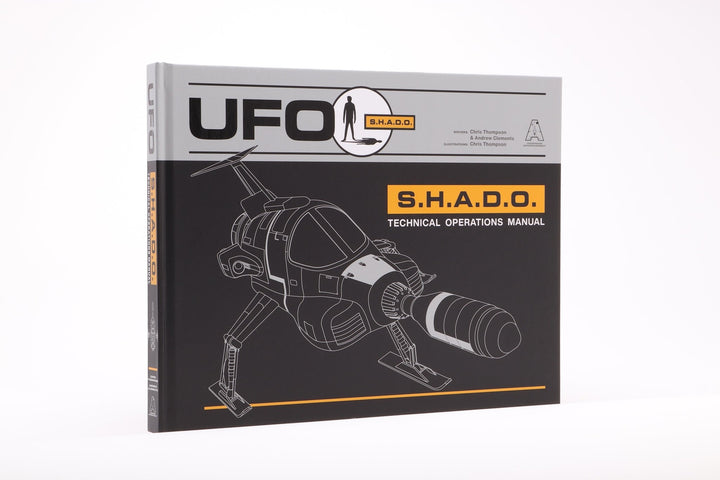Conquerors of the Stars: Fireball XL5's Vehicular Aesthetic
Share
Share

By 1962, mankind had made leaps and bounds in space development. Barely four years after the formation of the National Aeronautics and and Space Administration (NASA), the space race between the USSR and the US had accelerated the dominance for power within the stars and stimulated public imagination of all things cosmos. Artificial satellite creation and human spaceflight had been achieved by both sides, and in October of 1962, AP Films made their own giant leap for mankind with the blast off of Fireball XL5, the third production of AP Films to be filmed in Supermarionation.
Fireball XL5 remains a prime reminder of how the space race captured public imagination in Britain in the early 60s. The adventures of the World Space Patrol, set 100 years in the future in 2062, presented young audiences with a world where space travel was entirely commonplace. Mankind had dominated the stars for several decades at this point, colonising many worlds beyond the Solar System, and in doing so, encountering alien life - some friendly, some neutral, some antagonistic. At the centre of this wonderland of stardust is Fireball XL5 itself, the star craft of the World Space Patrol, a timeless design of what we may now think of as a defining design of the 'retrofuture', which many of Gerry Anderson's 1960s works have come to be known as.
All Systems, Go Go Go!

Crucial to the world of Fireball XL5 is how widespread space development has become. The ability to jet off to a far-distant world is an everyday occurrence for any one of the World Space Patrol's Fireball XL fleet, each craft commanding the security of a different section of the galaxy. At a time when interest in space development was becoming a rapid fixation, Fireball XL5 shows how AP Films had their finger on the pulse of popular culture.
Creating Fireball XL5's world therefore meant shaping a world rooted in real-world space developments with just enough of a fanciful approach to scientific fact to allow for imaginative storytelling. The hardware of the series may appear admittedly archaic compared to the even greater heights AP Films would enjoy with their later works, but in 1962, the world of Fireball XL5 was entirely cutting edge.
A Wonderland of Vehicles

The vehicular aesthetic of Fireball XL5 may not be as sleekly refined as what would come for Thunderbirds, Captain Scarlet, or Joe 90, but it has its own unique visual identity. Fireball XL5 was AP Films' first giant leap into futuristic sci-fi, and it shows. The vehicles of the series are minimalist in design and industrial in aesthetic. The lush, decadently detailed mechas of the various underwater aliens of Stingray are rather absent here. There's little here as colourful as what Stingray would boast, but equally, little as mysterious.
This is a universe where space travel isn't entirely concerned with being aesthetically pleasant. The vehicles of Fireball XL5 bear a grimy, dirtied-down vibe, designed and manufactured for purpose, speed, efficiency, rather than for being nice to look at. The series' black-and-white nature only adds to the workman-like tone of the series' mecha sci-fi credentials. But as the series demonstrates, that type of anti-style rather becomes a distinct style in its own right.

Many of Fireball XL5's vehicles feel like a natural development of how space vehicles developed during the space race may have evolved still further. The SCS Valiant space salvage craft and the robot freighter craft (The Robot Freighter Mystery) have a compact, capsule-sized appearance. Along with the likes of the Type 37H (Convict in Space), space fuel tankers (Hypnotic Sphere), the space fighter of the Plantonians (Planet of Plantonia), and the S.S. Thor all carry distinct echoes of real-world satellites designed by the US and USSR space forces around this time, shifting from capsule satellites to single-unit rocket craft.
On the darker side, the Granatoid tanks remain one of the series' most inspired designs. Insect-like tractor tanks. The Arcon's Electron Gamma Ship from Sabotage is a superbly menacing craft, with its pincer-like body and dark colour scheme. Exposed mechanics is another eye-catching detail of many vehicles seen throughout the series, a further aspect that enables Fireball XL5 to stand apart from the sumptuous sleekness of military technology that we see by the time we get to Captain Scarlet and Joe 90.

The Fastest Ship Alive
The heavy-duty aesthetic of Fireball XL5 gives the distinct impression of AP Films' special effects team grappling with new design ideas. What would become entirely natural for the likes of Derek Meddings and Brian Johnson still feels like the work of a team learning their craft. The world of Fireball XL5 makes logical sense when viewed in retrospect of Gerry Anderson's career, following on from Supercar. Equally, Fireball XL5 is light years away from the contemporary sensibilities of Supercar, a series with a firm eye on technological advancements, yet set in the year of its making. Fireball XL5 is the work of a design and special effects team pulling all the stops in matching the momentum of the very real space race.

You can discover more of the world of Fireball XL5 with our Fireball XL5 Technical Operations Manual!




![Fireball XL5 World Space Patrol Technical Operations Manual [HARDCOVER BOOK] - The Gerry Anderson Store](http://gerryanderson.com/cdn/shop/files/fireball-xl5-world-space-patrol-technical-operations-manual-hardcover-book-290050.jpg?v=1711729272&width=720)



![Stingray Comic Anthology Volume Two – Battle Lines [HARDCOVER] - The Gerry Anderson Store](http://gerryanderson.com/cdn/shop/files/stingray-comic-anthology-volume-two-battle-lines-hardcover-107681.jpg?v=1738856151&width=720)
![Space: 1999 and UFO Book Bundle - Signed Limited Editions [HARDCOVER NOVELS] - The Gerry Anderson Store](http://gerryanderson.com/cdn/shop/files/space-1999-and-ufo-book-bundle-signed-limited-editions-hardcover-novels-589446.jpg?v=1718836845&width=720)
![Stingray WASP Technical Operations Manual Special Limited Edition [HARDCOVER BOOK] - The Gerry Anderson Store](http://gerryanderson.com/cdn/shop/files/stingray-wasp-technical-operations-manual-special-limited-edition-hardcover-book-991914.jpg?v=1732922875&width=720)
![Stingray: The Titanican Stratagem – Signed Limited Edition [HARDCOVER NOVEL] - The Gerry Anderson Store](http://gerryanderson.com/cdn/shop/files/stingray-the-titanican-stratagem-signed-limited-edition-hardcover-novel-129251.jpg?v=1740558711&width=720)






